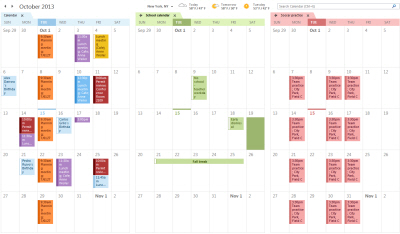

Buenas!, hoy tuve la oportunidad de resolver una incidencia muy común de un Exchange Server 2013 de un cliente con un entorno de DNS algo restrictivo. El problema radica en que los mensajes que se envían a través de OWA (o en la bandeja de salida de Outlook) se quedan atascados en la carpeta de borradores y no terminan de enviarse.

Bueno, por supuesto que es de Exchange Server 2013 de lo que estamos hablando, pero… sabes que version de Exchange correo en Exchange Online??? Exacto!, Exchange Server 2013 :), aso que puede ocurrir de igual forma si estas en Exchange Online con la diferencia que la solucion esta en lo que no puedes ver y el equipo de soporte de Microsoft seran los unicos capaces de resolver este fallo.
Pero la historia cambia cuando tenemos un entorno On-Premises o Hibrido :)
La principal razon de porque los mensajes se quedan atascados en la bandeja de salida es porque los enlaces de DNS estan configurados de maña manera y Exchange tiene que saber donde entregar el mensaje.
Así que, quizás te gustaría echar un vistazo en la EAC – Servidores – Doble Click en el servidor CAS que tiene el problema – Búsquedas de DNS, y establecer las direcciones de DNS tanto para correos internos como externos.


Después de eso, los usuarios deberían ser capaces de enviar mensajes normalmente.
Me gusta:
Me gusta Cargando...


Hi all, today I had the opportunity to solve one of my customers Exchange Server 2013 issues that is very common in restrictive DNS environments. The issue was about sent messages being stuck at the drafts folder and Exchange Server wasn´t able to send them out when using OWA (or Outbox with Outlook).

Well, of course it´s Exchange Server 2013 we´re talking about, but… do you know what Exchange Online is running on??? Yep!, Exchange Server 2013 :), so it can happen also if you´re on Exchange Online with the difference that the solution resides on what you can´t see and Microsoft Support Team will be the only ones able to solve it on this case.
But the story is different when you have an On-Prem or Hybrid environment :)
The main reason of why the outgoing messages are being stuck at the drafts folder is because of DNS bindings that may be incorrectly configured, and Exchange has to know where the message has to be given.
So, you would like to take a look at the EAC – Servers – Double Click to the CAS server that has the issue – DNS Lookups, and configure the DNS servers for both, Internal and external mails.


After that your users should be able to send messages normally.
Me gusta:
Me gusta Cargando...


When we do a cutover migration, we encounter just after migrating all the content and configure the new profile in Microsoft Outlook, it autoconfigures itself directly with the On-Premise Exchange server.
Besides, if we make a ping to autodiscover.dominio.com, it will always resolve the local exchange server ip instead of the Office365 autodiscover, no matter if we add it to the hosts file, configure external DNS or even add the entry to the local DNS.
This is because Exchange 2010 presents the built-in functionality of autodiscover, and in order to the new profiles take effect of the new configuration needed, is necessary to do one of the two following steps:
1- Delete the Autodiscover virtual dir in IIS (at the local Exchange server):
- Run the Exchange Management Shell
- Execute the following commands
Remove-AutodiscoverVirtualDirectory -Identity «MyServer\autodiscover(autodiscover.contoso.com)»
Set-ClientAccessServer name -AutoDiscoverServiceInternalUri $null
- Restart IIS running «IISRESET» command inside a Command Line Console
2- Add the following registry entries on the client machine:
- Navigate to the path, if it´s Outlook 2007: HKEY_CURRENT_USER\Software\Microsoft\Office\12.0\Outlook\Autodiscover
- Navigate to the path, if it´s Outlook 2010: HKEY_CURRENT_USER\Software\Microsoft\Office\14.0\Outlook\Autodiscover
- Add the following values:
«PreferLocalXML»
«ExcludeHttpRedirect»
«ExcludeHttpsAutodiscoverDomain»
«ExcludeHttpsRootDomain”
«ExcludeScpLookup»
«ExcludeSrvLookup»
«ExcludeSrvRecord»
«PreferLocalXML»=dword:0
«ExcludeHttpRedirect»=dword:0
«ExcludeHttpsAutodiscoverDomain»=dword:0
«ExcludeHttpsRootDomain»=dword:1
«ExcludeScpLookup»=dword:1 (forces Outlook to exclude SCP object check)
«ExcludeSrvLookup»=dword:1
«ExcludeSrvRecord»=dword:1
- Restart the machine and créate the new profile.
Me gusta:
Me gusta Cargando...











